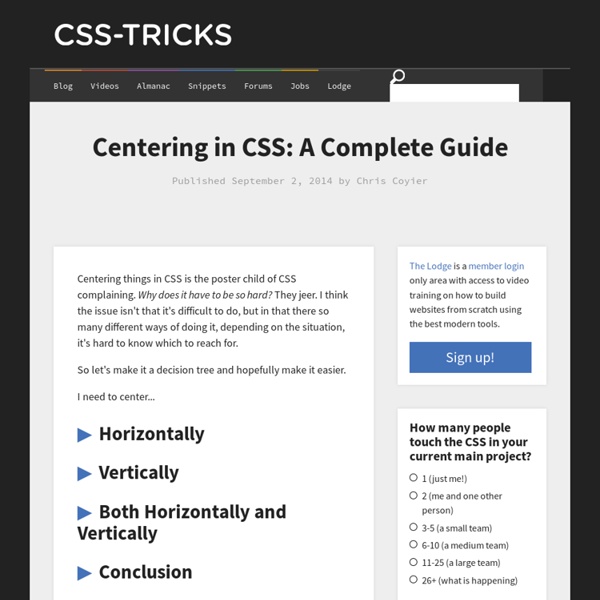



CSS you can get excited about in 2015 CSS is a constantly evolving language, and as the new year begins it’s a great time to take a look at some of the emerging features that we can start to experiment with. In this article I’ll take a look at some newer modules and individual CSS features that are gaining browser support. Not all of these are features you’ll be able to use in production immediately, and some are only available behind experimental flags. However you’ll find plenty of things here that you can begin to play with — even if only during a prototyping stage of development. CSS Selectors level 4 The level 3 selectors specification is well implemented in browsers and brought us useful selectors such as nth-child. The negation pseudo-class :not The negation pseudo-class selector :not appears in level 3 but gets an upgrade in level 4. In level 4 of the specification you can pass in a comma separated list of selectors. The relational pseudo-class :has The matches-any pseudo-class :matches CSS Blend Modes Using mix-blend-mode
10 Useful CSS Code Snippets CSS3 and HTML5 code snippets are one of the most popular resources web developers and designers search for. They are useful codes offering basic functionality that is quite common in the web developing world, and as such, save the developers a lot of time. Most of these snippets, depending on the functionality they offer, are premium, but there are hosts which are absolutely free and can come in equally handy. You can download and use this snippets and then modify them according to your needs. This allows one to save a lot of time and you hardly ever have to start from scratch. We know how valuable your time is so we took the liberty to go through the internet machine and list down only the best and free code snippets for you to utilize in your development work. Cross-Browser Transparency Classic CSS Clearfix CSS Resets CSS Blockquote Template Individual Rounded Corners General Media Queries Modern Font Stacks Custom Text Selection Hiding H1 Text For Logo
Using CSS animations - Web developer guide CSS animations make it possible to animate transitions from one CSS style configuration to another. Animations consist of two components, a style describing the CSS animation and a set of keyframes that indicate the start and end states of the animation's style, as well as possible intermediate waypoints along the way. There are three key advantages to CSS animations over traditional script-driven animation techniques: They're easy to use for simple animations; you can create them without even having to know JavaScript. The animations run well, even under moderate system load. Configuring the animation To create a CSS animation sequence, you style the element you want to animate with the animation property or its sub-properties. The sub-properties of the animation property are: animation-delay Configures the delay between the time the element is loaded and the beginning of the animation sequence. animation-direction animation-duration animation-iteration-count animation-name animation-play-state
Rendera - Online HTML5 Editor